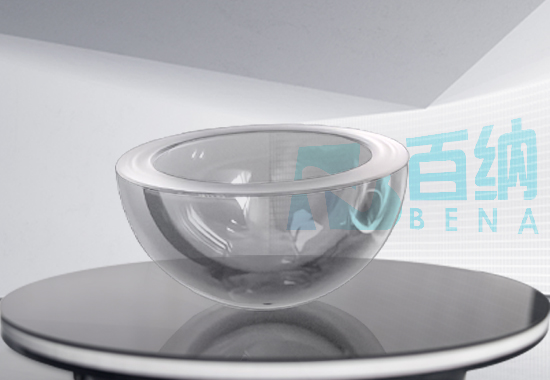
In the field of solar energy and meteorological research, accurate measurement of solar radiation is paramount. Bena Optics, a leader in advanced optical solutions, has developed a revolutionary dome technology that ensures precise monitoring of hemispherical solar radiation. This innovative approach not only enhances the accuracy of measurements but also provides durability and reliability in various environmental conditions.
Understanding Hemispherical Solar Radiation
Hemispherical solar radiation refers to the total solar energy received by a plane from a 180° field of view, expressed in W/m². This measurement is crucial for various applications, including solar energy production, agricultural research, and climate studies. The solar radiation spectrum spans from approximately 285 to 3000 x 10⁻⁹ meters, and a solar radiation intensity meter must cover this spectrum as uniformly as possible to ensure accurate readings.
The Importance of Cosine Response
One of the key features of a solar radiation intensity meter is its directional response, often referred to as cosine response. This property ensures that the sensor's response to beam radiation varies with the cosine of the incident angle. An ideal cosine response means full sensitivity when the radiation hits the sensor vertically (0° incidence angle) and zero sensitivity when the sun is at the horizon (90° incidence angle). At intermediate angles, such as 50°, the response should be 60% of full sensitivity. Bena Optics' dome technology is designed to achieve this ideal cosine response, ensuring precise and reliable data collection.
Dual Dome Architecture for Enhanced Performance
Bena Optics' innovative approach includes the use of a dual dome architecture, especially for secondary standard and primary heliotropic intensity meters. This advanced design offers several benefits:
Improved Radiation Shielding: The dual domes provide additional protection against environmental radiation, ensuring better thermal balance between the sensor and the inner dome.
Reduced Instrument Offset: The secondary dome significantly minimizes instrument offset, leading to more stable and accurate readings over time.
Extended Spectral Range: The domes are designed to cover the spectral range from 285 to 3000 x 10⁻⁹ meters, while maintaining a 180° field of view. This ensures comprehensive coverage of the solar radiation spectrum.
Environmental Isolation for Durability
The glass domes not only enhance the optical performance of the sensor but also protect the thermopile sensors from environmental factors such as convection and rain. This isolation ensures that the sensor operates reliably under various weather conditions, making it an ideal choice for both laboratory and field applications.
Applications and Benefits
Bena Optics' dome technology is widely applicable in a variety of fields, including:
Solar Energy Production: Precise measurement of solar radiation is essential for optimizing solar panel performance and energy output.
Agricultural Research: Understanding solar radiation patterns helps in crop management and irrigation planning.
Meteorological Studies: Accurate data on solar radiation is crucial for climate modeling and weather forecasting.
Conclusion
Bena Optics' advanced dome technology represents a significant advancement in the field of solar radiation measurement. With its superior cosine response, dual dome architecture, and environmental isolation, our solutions provide unparalleled accuracy, reliability, and durability. Whether you are involved in solar energy production, agricultural research, or meteorological studies, Bena Optics' domes are the ideal choice for all your solar radiation monitoring needs.
Discover the future of solar radiation measurement with Bena Optics. Contact us today to learn more about our innovative dome technology and how it can benefit your projects.